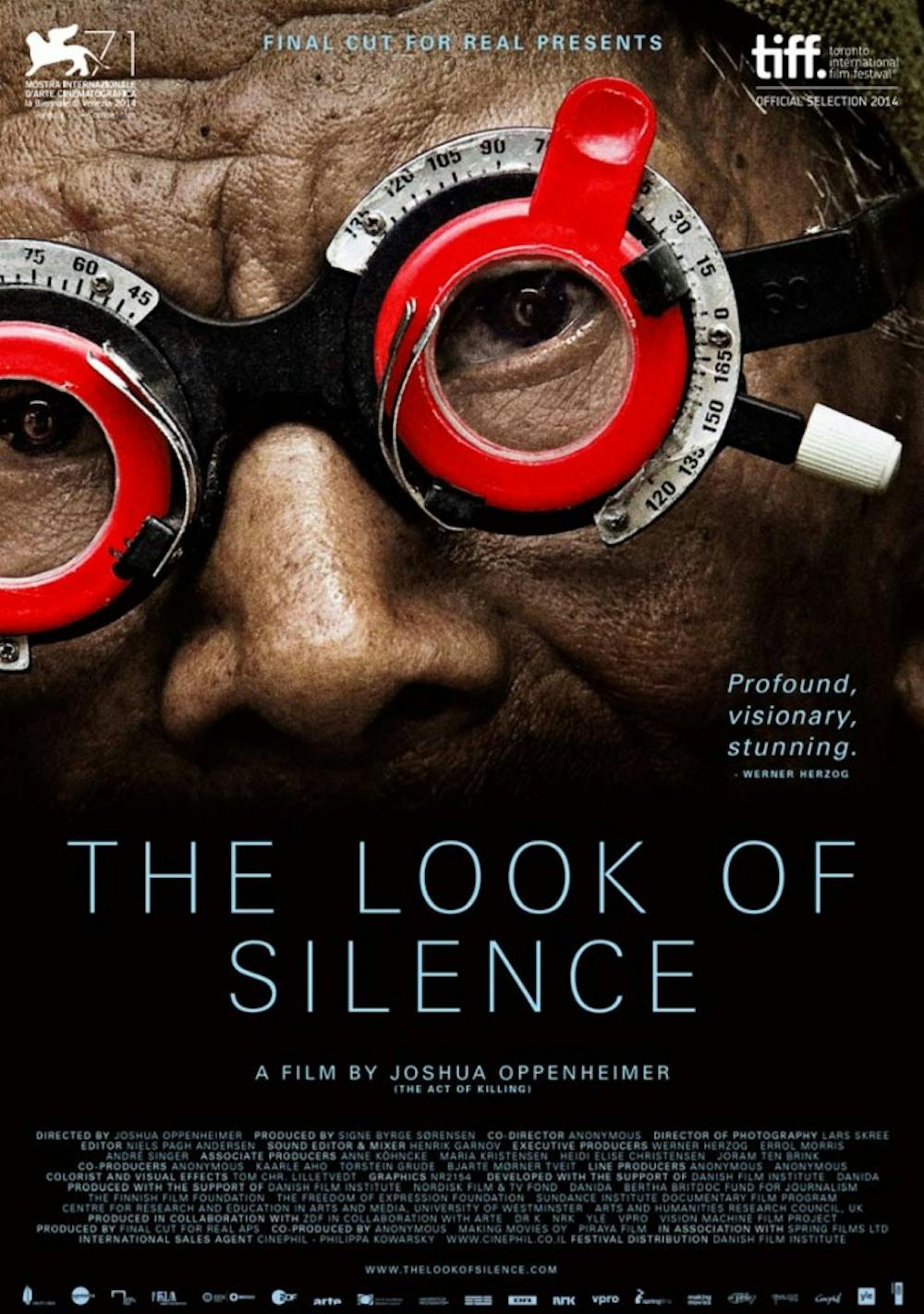The haunting lengths that the human mind will go to to protect itself is the primary subject of Joshua Oppenheimer’s riveting new documentary, “The Look of Silence.”
“The Look of Silence” serves as a companion film to Oppenheimer’s earlier film, “The Act of Killing,” which used a unique approach to bring to light the horrendous, but mostly unknown, events of the Indonesian genocide of 1965. The genocide was a result of the Indonesian military takeover of the government in response to anti-communist fervor brought on by propaganda.
Oppenheimer’s interviews reveal how anyone suspected of being a communist was in danger of being kidnapped and executed, either by gangs obsessed with western culture or by paramilitary youth groups, both of which operated under military sanction. Most of the victims — who number almost one million, according to the film — were made up of poor farmers and ethnic or religious minorities.
The surviving perpetrators of these war crimes are the documentary filmmaker’s primary fascination and means of examining these events. In “The Act of Killing,” Oppenheimer allows the killers to tell their stories and even re-enact the crimes in visceral detail. The result is a gruesome yet fascinating look at how people rationalize their actions, contrasted against Indonesia’s emerging consumer culture.
“The Look of Silence” is nearly as surreal as “The Act of Killing”, in that Oppenheimer’s camera once again focuses on men who seem eerily casual as they discuss executing people. Later on, the film becomes a very specific portrayal of history, as it were, being written by the victors.
A striking element of the first film was how it examined the disconnect between reality and cultural narrative. The brutality of the mass killings are an open secret, but are not discussed because of the narrative that justifies the actions as necessary. The perpetrators are in some cases treated as pseudo-celebrities.
The conversations with the killers are more grounded in “The Look of Silence.” Where “The Act of Killing” follows the men down a path of self-delusion and simultaneous loathing to become more surreal, “The Look of Silence” attempts to bridge these cognitive gaps.
Oppenheimer no longer lets the perpetrators follow their trains of thought unchallenged. Instead, accompanying him is an Indonesian man who was born several years after the genocide took place and had a brother who was killed. The man, an eye doctor by trade, goes about fitting glasses on the men who murdered his brother. His instruments often obscure their faces in an absurd way while they detail their crimes, and the mixing of the banal activity with violent discussion gives the film a surreal quality. The contrast of everyday life and nearly unimaginable cruelty is shown starkly.
The eye doctor, who is never identified to protect his safety, challenges his brother’s murderers and logically examines their justifications, exposing their hypocrisy not by condemning them, but by simply stating facts. The film is very powerful when it cuts to his reactions, when the restrained but obvious emotions play out across his features as he listens to justifications for brutal acts. When he displays basic sadness and empathy he seems to be the only sane person in mad world.
It’s fascinating to see the people’s disparate reactions as they are forced to reexamine a shameful time in their lives. Some try to trivialize the tragedy in an attempt to deal with it jokingly, while others take the opposite approach, trumpeting the necessity of the actions while minimizing the specifics of the result. One of the killers is all too ready to discuss the details of his crimes but, when his motivations are challenged, shrugs off questions by saying he doesn’t like discussing politics.
“The Look of Silence” is a powerful, devastating yet poetic look at human nature and the narratives we construct to give meaning to our actions and lives. Oppenheimer’s camera somehow always uncovers the truth of a situation, even when those speaking are lying to him and to themselves. “The Look of Silence”, like “The Act of Killing” before it, explores the events of the 1965 genocide with surprising humanity and empathy for both the victims and the perpetrators.
Oppenheimer uses the medium of film to its fullest, with it doing something his subjects are incapable of, reconciling emotions with facts and disparate realities in an effort uncover a truer understanding of the often-confused, often-violent human struggle. The film is an intense, visceral act of reflection.
Get content from The Daily Lobo delivered to your inbox
Nathan Reynolds is a freelance reporter for the Daily Lobo. He can be reached at culture@dailylobo.com or on Twitter @yayap001.






